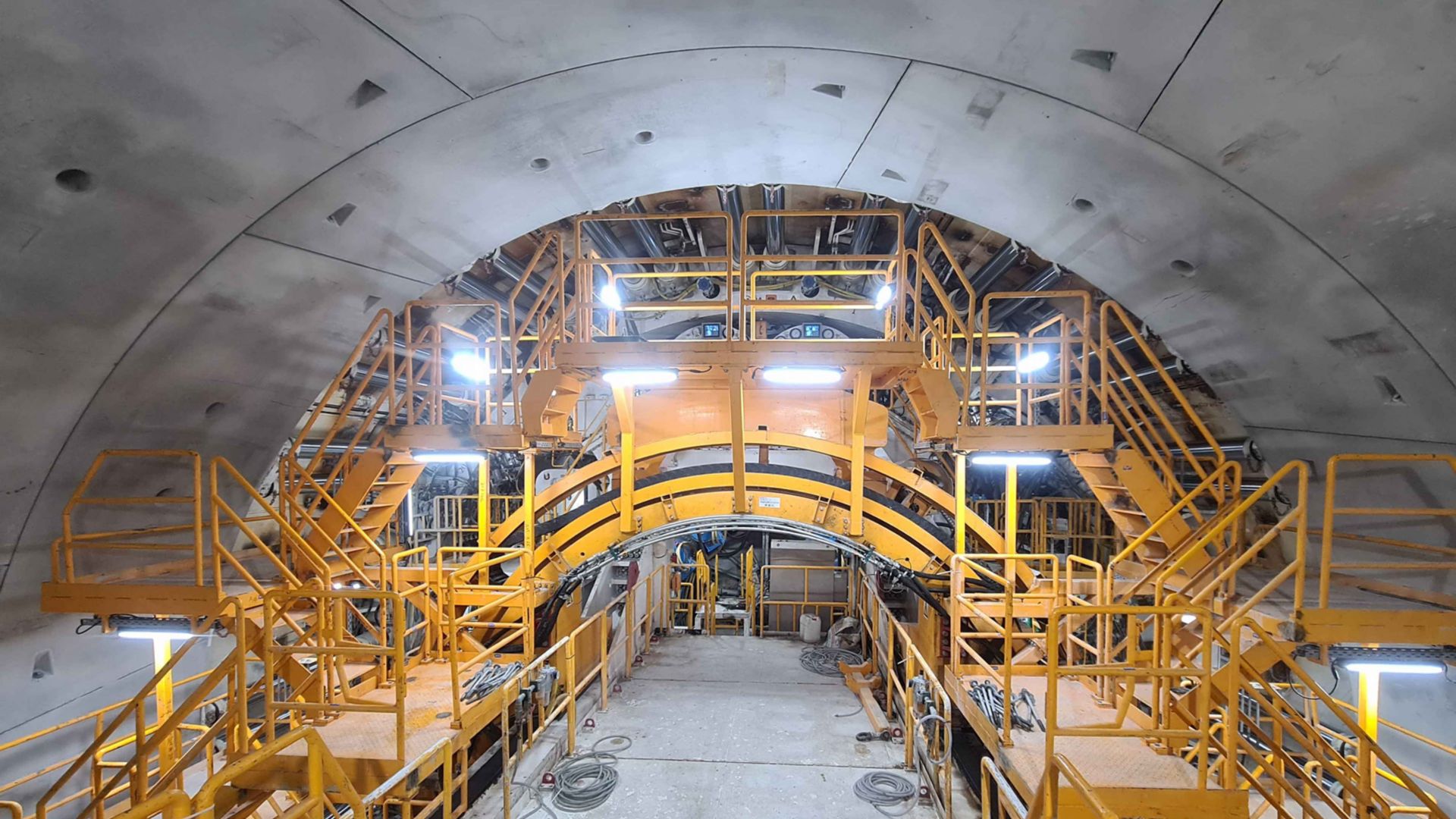2021
Swinoujscie, Poland
During March and September 2021, a joint venture between the companies PORR and GULERMAK was responsible for the excavation of the 1.48 km bidirectional traffic road tunnel. The project includes a 3.2 km road link connecting the islands of Uznam and Wolin in Poland, of which 1.48 km was excavated by
a tunnel boring machine (TBM). The final inner diameter of the tunnel is 12 meters.
The tunnel was constructed mainly with a TBM, and some sections were built by cut and cover on the ramps. It includes four escape exits, two of which will be constructed with the use of soil freezing. The geology of the project was classified as marine fine sand, silty clay, sand, sandy clay with random gravel and chalk. The tunnel is planned to be opened in 2023.
About the TBM
For the realization of this big project, a slurry TBM with an impressive 13.46 m diameter was used to excavate the tunnel in a very short time. The TBM counted with a max. thrust force of 135.114 kN and a breakout torque of 35.747 kNm, allowing a max. speed of excavation up to 60 mm/min.
For this type of TBM, the soil is mixed with a bentonite slurry in the front of the TBM, before the excavated material is removed from the machine using steel pipes instead of a conveyor belt. The excavated material passes a separation plant installed in the starting shaft, where the soil and the slurry from the mud are being separated before it could be re-used for further excavation.
Sika Solutions
Excavation with shield TBMs require the installation of precast concrete segments to build the tunnel structure. Once the segments have been installed with the erector, an annular gap remains between the segments and the excavated ground. The filling of this annulus is very important and ensures the homogeneous contact with the ground, transfers load from the TBM gantry, and can help to waterproof the tunnel.
Considering past experiences, a two-component grout has been required to fulfil the annular gap. The grout is prepared by mixing a blend of water/ cement, bentonite and retarder (called together component A) with an accelerator (called component B). The two components get mixed just before the component A is injected through the shield on the back of the TBM. Few seconds after the mix of component A and B the grout transforms from liquid to a creamy gel in around 10 – 12 seconds (called gel time). The final mix has a comparable compressive strength to that of the surrounding ground and can fill every gap and void before it sets and hardens.
For the required flow and retarded set effects SikaTard®-220 G POL has been used. For the accelerator effect, Sika® Sigunit®-2100 LT was selected. Both products have been locally developed and tested to fulfill the expectation of the construction company and the technical expectations during the advance of the TBM. The gel time could even be optimized during excavation with variation in the dosage pf the component B. The compressive strength of the grout was proven to be optimized the best with the Sika® products. Additionally, the compatibility and good reaction with other components of the grout mix, such as bentonite and accelerator, was shown to be very effective.
Products Used
SikaTard®-220 G POL
Sika® Sigunit®-2100 LT
Project Participants
Owner
City of Swinoujscie, Poland
Contractors
JV PORR/GULERMAK
Sika Organization
Sika Poland

